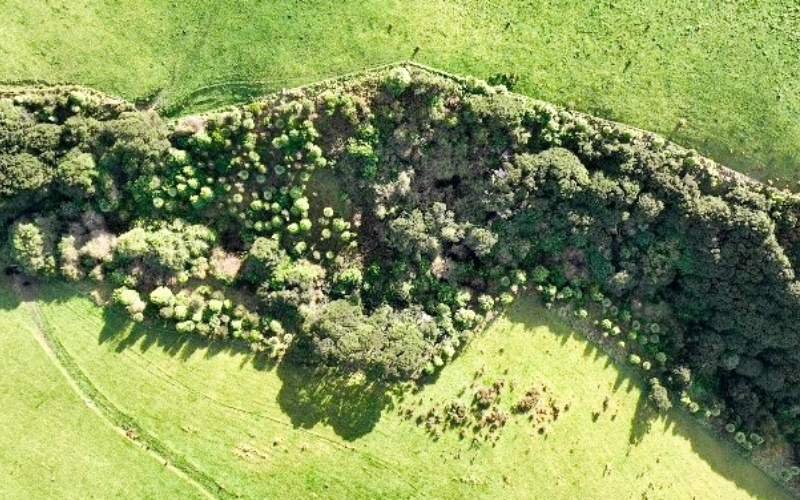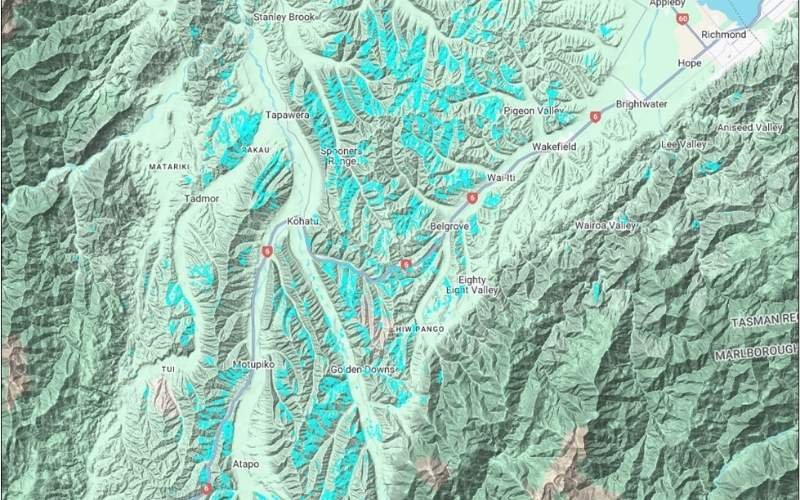FM Group Newsletter
Spring 2025
Introduction
FROM THE DIRECTORS
Welcome to the Spring edition of our newsletter.
We are proud to announce that our team has just wrapped up our most ambitious planting season to date across all regions. We are now fully focused on the crucial release spraying programme to ensure the health of our new stock.
While recent changes to the ETS settings suggest a reduced planting volume for 2026 compared to previous years, we still have a significant number of orders on the books. Despite the accelerated forest conversion over the last seven years, it's important to note that the New Zealand forest estate remains approximately 200,000 hectares smaller than it was in 2002 - a fact often overlooked in the agricultural debate.
Although our industry has faced headwinds, including multiple recent plant closures, continuous innovation is driving positive change. Newer technology is leading to more efficient production, and new wood-based products are constantly being developed. A notable example of this progress is the five current projects in Christchurch that are utilising mass timber products.
Glenn Moir
Director
Log Market Update
The New Zealand forestry sector is undergoing a key transition, driven by government and industry plans unveiled across 2024 and 2025. The core focus is a strategic shift from a volume-based to a value-added industry. This is centred on boosting onshore wood processing, diversifying products, increasing exports of high-value goods, and embracing innovative, sustainable technologies.
The domestic processing industry has recently faced some significant setbacks. The closure of CHH’s Eves Valley sawmill in Nelson, the South Island’s largest sawmill processing an average of approximately 300,000 tonnes of logs per annum. This was followed soon after by the closure of CHH’s plywood mill in Tokoroa.
While the industry pursues its long-term, high-value goals, the domestic market has seen a mixed but improving picture. Domestic mills experienced a difficult winter, but orders for construction timber are now strengthening. However, they face significant competition from large-scale North Island processors supplying wood south.
Processors supplying pallets to the robust dairy sector are performing well, benefiting from record-breaking dairy prices and demand. The logs used for this, often K-grade, are being diverted away from the export market.
Sawmills cutting clearwood products are concerned about their exposure to the US market, anticipating potential tariffs on trade. While customers in the States confirm they cannot source these specific products elsewhere (suggesting the US consumer will absorb the increased price), the threat remains a major worry.
Export Log Markets
The export market has been largely stable over the past month, though price erosion is occurring in some areas. A slight increase in ocean freight costs on some lower South Island ports is translating to a small decrease in the At Wharf Gate (AWG) prices offered by exporters.
China Offtake (demand) remains steady at approximately 55 - 65k cubic metres per day across most ports. Demand in South Korea is flat, with local processors purchasing the majority of the volume.
While some in the industry anticipate log demand will increase during the NZ summer months, there is currently little tangible evidence to support this expectation.
FM Group is processing a reasonable volume of Corsican and Ponderosa pine in Timaru. Historically priced higher than Radiata, these species are currently priced lower, likely because the quality and yield of Radiata are proving superior for conversion into sawn lumber.
The outlook for the summer harvesting period is positive. The sustained period of market stability is creating a beneficial environment for both log buyers and sellers. To capitalise on this, FM Group are proactively locking in longer-term price agreements across many ports to provide forest owners with increased financial security. Overall, the fundamentals in the export market are unchanged, which is constructive for New Zealand, especially as reduced volumes from international competitors help support our supply.
ETS - Carbon Price Update
The Emissions Trading Scheme (ETS) is a market-based policy tool designed to reduce greenhouse gas emissions by putting a price on pollution. Participants are required to buy carbon credits (NZUs) to offset their emissions. Each NZU equates to 1 tonne of carbon dioxide.
At present, NZU prices are trading in the range of $54 - $56 per NZU. This has traded slightly downwards since our last newsletter, with an increase in selling pressure being seen in the market again.
At $54 - $56 per NZU, the carbon price is still currently significantly lower than the government ETS auction floor price for 2025. For 2025, the ETS auctions have only 6 million NZUs available, priced at a minimum of $68. So far, the three ETS auctions for 2025 have failed with no bids placed by buyers. Volume has rolled over to the final auction in December.
Market commentators are suggesting it's unlikely the December auction will clear, which would see 6 million NZUs cancelled and not carried through to 2026.
In other news of interest, the Government announced that it would lower the 2050 biogenic methane reduction target to a range of 14 and 24% based on 2017 levels (down from 24 to 47 % reduction below 2017 levels). The NZU market response was subdued, with little to no immediate response.
All eyes are now on the December auction. Will this be a non-event as expected? Or will there be a Christmas surprise for NZU holders?
Emissions Trading Scheme
Forest Management Group has been heavily involved in working with the Emissions Trading Scheme (ETS) since forestry became a participant in 2008.
Carbon in forestry adds a significant new income stream to traditional forest investment. The carbon market holds huge potential for forest owners as further industries are required to offset their emissions.
Forest Management Group offers specialist services in the ETS and can undertake work in a variety of areas, including:
• Registering post-1990 forests into the ETS
• Managing carbon flows to understand repayment obligations
• Planning and managing new planting projects
• Establishment of joint ventures
• Sale of carbon credits
New Farm to Forestry Conversion Rules
After the Government announcement in Dec 2024, new legislation to stop large farm-to-exotic forestry conversions entering the ETS will come into effect on 30/10/2025.
The restrictions are based on the Land-Use Capability (LUC) mapping of a property. This is done using the LUC mapping that has been undertaken by MfE. However, if a property owner thinks that their land has not been classified correctly, they can have their property independently mapped, and this data can be supplied to MPI at the time of registering their forest. There is no restriction on registering indigenous forest on any LUC class land.
The main points of the restrictions are:
• Register 25% of LUC 1-6 land as exotic forestry on each farm in the ETS. There is no restriction on the area that can be planted, only a restriction on the areas that can be registered in the ETS.
• As well as the 25% above, 15,000 hectares per year LUC 6 farmland can be registered in the ETS. Ie. If more than 25% of LUC 6 land on a property is to be registered, an application can be made to register the area over the 25% allowance through the annual ballot.
• There is no limit on the areas that can be planted and registered on LUC 7/8 land.
• The annual limit of 15,000 hectares for LUC 6 farmland will be allocated by a ballot process. There will be 2 ballots per year of 7,500ha – one before 31 July and the second at a date determined by the EPA (Environment Protection Authority, who administer the ETS). As part of this quota, 2000ha/ballot will be allocated specifically for small applications of up to 100ha. A permit will be issued against the property title, and once issued, an application to register the forest in the ETS can be made.
• Any unallocated applications from the first ballot will be rolled over to the second ballot.
• The first ballot is proposed to be held in mid-2026.
• Specific categories of Māori-owned land are exempt from these restrictions.
• There are transitional exemptions for people who were in the process of investing in afforestation prior to these changes originally being announced on 4/12/2024. These exemptions include NES-CF afforestation notifications to Councils (to plant), resource consent applications to plant, seedling orders deposits and land preparation payments, third-party due diligence reports, forestry rights etc. undertaken between 1/1/2021 and 4/12/2024.
• A permit confirming the 25% of LUC 1-6 land allowed to be registered in the ETS will be recorded against the property's title to restrict further planting as a result of subdivision. If less than 25% of LUC 1-6 land is recorded against the title and the property changes hands, the new owner will NOT be allowed to plant and register the remaining allocation up to 25%.
If you have any questions or concerns about how these restrictions may affect you, please contact Adrian or Sarah.
Final Emissions Returns due 2026
Post-1989 Final Emissions Returns
Final Emissions Returns are required to be submitted at the start of 2026. This is the opportunity to balance carbon credit claims (NZUs) for the previous 01/01/2023 to 31/12/2025 period.
If you have post-1989 forest land in the Emissions Trading Scheme (ETS), you have a legal obligation for a final emission return to be submitted before 30 June 2026.
Your ETS manager can undertake this emission return on your behalf to claim the carbon entitlement for the 01/01/2023 to 31/12/2025 period.
Te Uru Rākau has stressed the importance of submitting accurate emissions returns. Before submitting an Emission Return, Te Uru Rākau have recommended:
• Ensuring forest details (including clearing and planting) are up-to-date in Tupu-Ake if you plan on using the system calculator.
• Any outstanding emissions returns have been submitted.
• Other transactions, such as notifying changes to land ownership, land agreements or removing land, are completed.
Before submitting an emission return, we will check the above information is correct to help ensure you remain compliant. However, please let us know if you are aware of any information that may need to be updated prior to submitting a return.
Please contact your local FM Group Forest Manager if you have any questions.
Tasman Windblow
In late July 2025, Nelson experienced one of its most significant wind events in recent memory. The powerful gusts that swept through the region not only disrupted daily life but also caused significant damage to various plantation forests throughout the Tasman region.
Estimates of the extent of the area damage have varied, partly due to the extent of the event, but also due to the damaged fringes that surround the blown-over areas. Between 5,000 and 6,000 hectares of plantation forest are said to have been affected, and salvage operations are expected to extend into the second half of 2026.
FM Group has focused its efforts to ensure a prompt and urgent response to ensure financial losses are minimised for clients. Tasman Regional Manager Craig McMiken, a director of the FM Group says, “It’s been all hands on deck since the night of the event, finding solutions to recover as much value as possible for clients before the logs degrade, but equally important, making sure that everyone gets home safely each day”.
He adds “Health and Safety and care for our environment remains at the forefront of our salvage response plans”. Craig acknowledges that some clients have potentially had some significant losses, and that their experienced team of staff and contractors have responded swiftly into action to minimise these.
Forests registered in the ETS that have suffered from windblow damage may be eligible for an adverse event exemption in conjunction with their harvesting salvage. Forest owners are encouraged to contact FM Group for expertise to ensure not only that they recover value from harvesting but also manage their obligations within the NZ Emissions Trading Scheme.
Below is an image generated by Scion using satellite radar imagery, which visualises the extent of the damage. The high-level imagery shows probable windblow, generated by the change in satellite imagery.
Tasman Windthrow generated from Satellite Radar, provided by Scion Group
From the Backpage
Institute of Directors Chartered Member
Christchurch-based Director, Adrian Loo, has completed the requirements to become a Chartered Member with the Institute of Directors. Adrian's Governance training is applied both at Forest Management and for the Farm Advisory Boards and Industry bodies he is involved in. We are firm believers that strong governance is essential for the success of any business and ensuring your board has a strong understanding of forestry and the ETS is essential for success.
Goodbye Andrew!
Andrew Dennes has left Forest Management NI in August.
We would like to thank Andrew for his contributions to the team during his time with us and wish him genuine success in his next professional endeavour.
Forest Management Group and Farmlands announce partnership
Forest Management Group is proud to announce that we are now a Farmlands Card Partner. The partnership will mean that all Farmlands shareholders can now use their Farmlands card to purchase services from Forest Management Group. You will see our logo on the 2026 Farmlands calendar, and we will be announcing further joint initiatives together going forward - Watch this space!
Previous issues
Autumn 2025 Newsletter
In this issue: Log Market Update, ETS Crabon Price Update, 2026 Plating Season Orders Open, Adding Value to Your Forest Through Pruning and a Goodbye to FM Group’s Rose!
Winter 2024 Newsletter
In this issue: Carbon Price Update, Log Market Update, Stand Record System, 2025 Planting Season Orders Are Open, FM Group Rides For A Good Cause.








